Crammed into the list below are the places and experiences that a first-timer in the City of Light just can’t pass up.
Some of these attractions are so rich and time-consuming that there’s enough for several trips.
And not a moment would be wasted, in the thrall of some of the greatest art made by man, monuments indelibly part of the world’s consciousness and sights that witnessed some of the defining moments in European history.
But Paris is much more than can be summed up in a list, and needs to be felt, seen, smelled, heard and of course tasted, as you idle from great attraction to the next.
1. Eiffel Tower
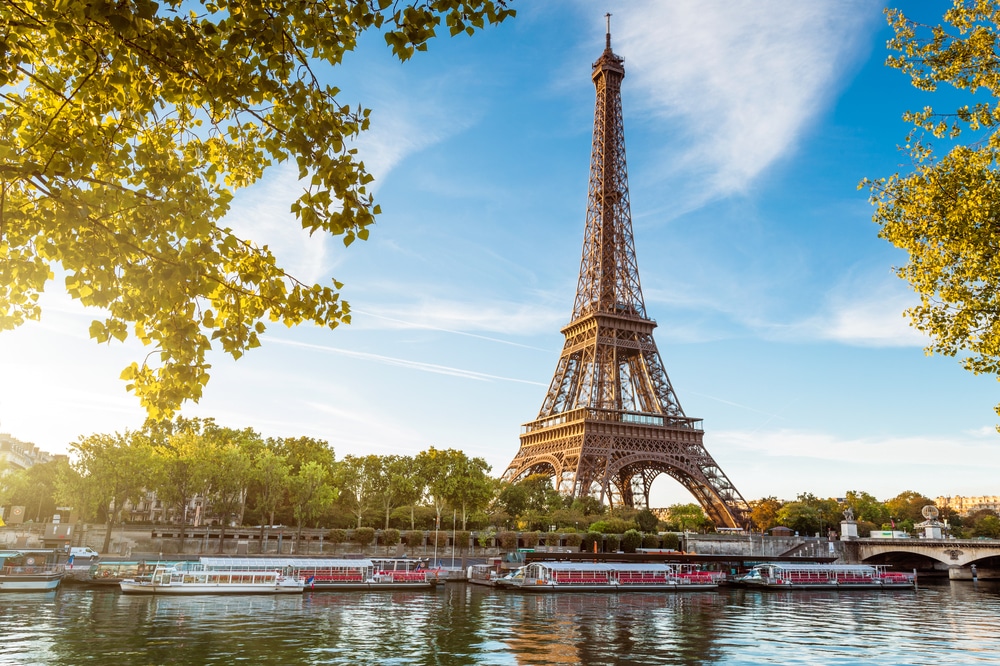 Source: beboy / shutterstock
Source: beboy / shutterstockUnapologetically top of our list is probably the most recognisable man-made monument on the planet.
More than any other, the Eiffel Tower is a sight that makes Paris, Paris.
And to go with the timeless beauty of its wrought-iron framework, it’s a building with statistics that can make your head spin.
Despite being completed for the 1889 World’s Fair, after just two years of construction, it still has the highest publicly accessible observation deck in the European Union, at 276 metres.
At a total of 300 metres it was the world’s tallest structure until 1929 and remains the second-tallest structure in France.
Even from the first level the panorama of Paris is one of the best, letting you look right along the bend of the Seine.
Website: https://www.toureiffel.paris/
2. Louvre Museum
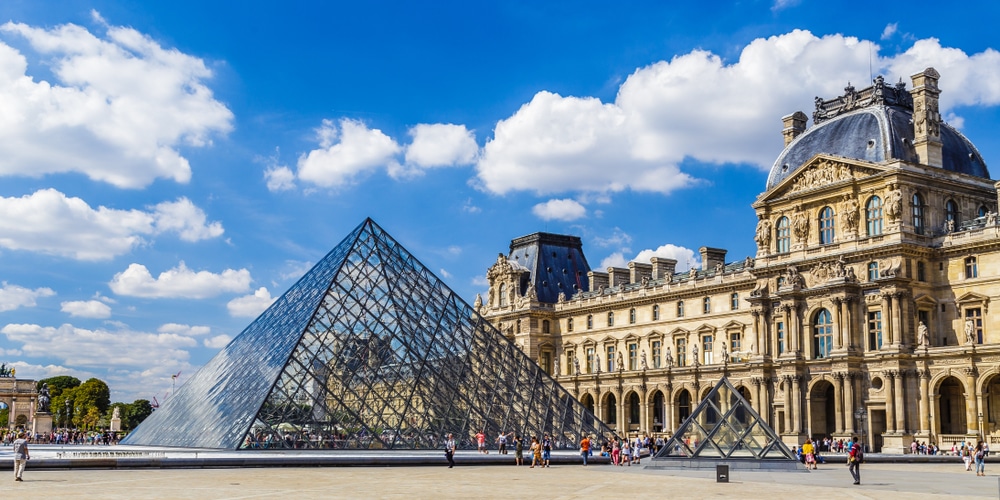 Source: JeanLucIchard / shutterstock
Source: JeanLucIchard / shutterstockNo museum in the world is larger or receives more visitors than the Louvre.
The building, paired with its famous glass pyramid in 1989, also ranks among the world’s largest palaces.
This was the residence for Kings and Emperors, from its early days as a castle in the 12th century up to when Louis XIV decamped to Versailles in the 17th century.
The palace’s links to the art world were forged at that time, when the Louvre became the showcase for the royal collection.
Now the amazing extent of the holdings, reaching back to Antiquity, is as intimidating as their home.
A day is nowhere near enough, and two could even be a squeeze.
A few works of international renown are the Mesopotamian Winged Bulls (700 BCE), Venus de Milo and Winged Victory of Samothrace (both 2nd Century BCE) and the Roman Borghese Gladiator (c 100 BCE).
Of course, Leonardo da Vinci’s Mona Lisa is the big draw, but don’t overlook his Virgin and Child with St Anne, van Eyck’s The Virgin of Chancellor Rolin (1435), Vermeer’s Astronomer (1668) or the symbolic Gabrielle d’Estrées et une de ses Sœurs (1594). And these are no more than an aperitif.
Website: https://www.louvre.fr/
3. Musée d’Orsay
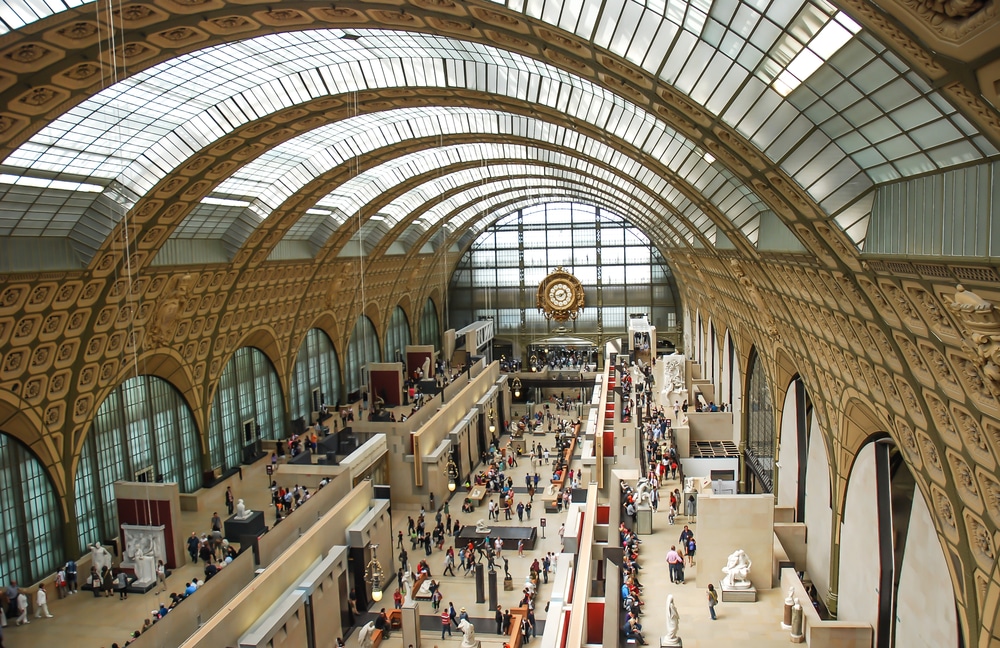 Source: Turkey Photo / shutterstock
Source: Turkey Photo / shutterstockOn the menu at this breathtaking museum is the world’s finest collection of Impressionist painting.
The venue for the Musée d’Orsay is also special, beneath the glass vaults of the Gare d’Orsay station (1900). The station was earmarked for demolition in the 1970s but was listed in 1978, and in 1981 Italian architect Gae Aulenti came up with a plan to turn it into a museum while preserving its Beaux-Arts architecture, fittings and furniture.
The quantity of works by Monet (86), van Gogh (24), Cézanne (56), Degas (43), Pissarro (46) and Manet (34) is just mind-boggling, and art lovers may get frissons beholding Starry Night, Luncheon on the Grass or The Card Players in the flesh.
And although there’s an accent on Impressionist painting, the collections extend to sculpture, photography and decorative arts from 1848-1914.
Website: https://musee-orsay.fr/
4. Arc de Triomphe
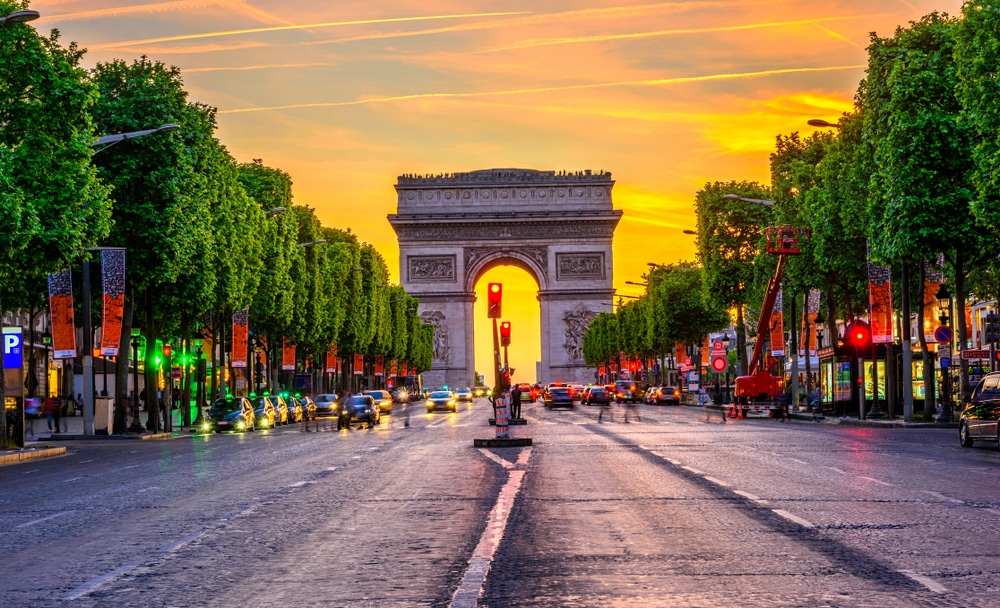 Source: Catarina Belova / shutterstock
Source: Catarina Belova / shutterstockNapoleon was at the height of his powers when he called for a triumphal arch to be built at the top of the Champs-Élysées.
This was 1806, but it would be another 30 years before the Arc de Triomphe was completed.
The design, paying tribute to those who fought and died in the Revolutionary and Napoleonic Wars, is a pillar-less version of Rome’s 1st-century Arch of Titus, but the dimensions are off the charts.
At 50 metres tall in height, this would be the tallest triumphal arch in the world for the next two centuries.
A tomb for the unknown soldier was placed under the vault after WWI, with a flame of remembrance rekindled daily at 18:30. Meanwhile the sculptural groups and reliefs on the arch hail the major treaties and battles of the Revolution and Napoleonic era.
Head to the roof for a crisp view along the 12 radiating avenues.
Website: http://www.paris-arc-de-triomphe.fr/
5. Palace of Versailles
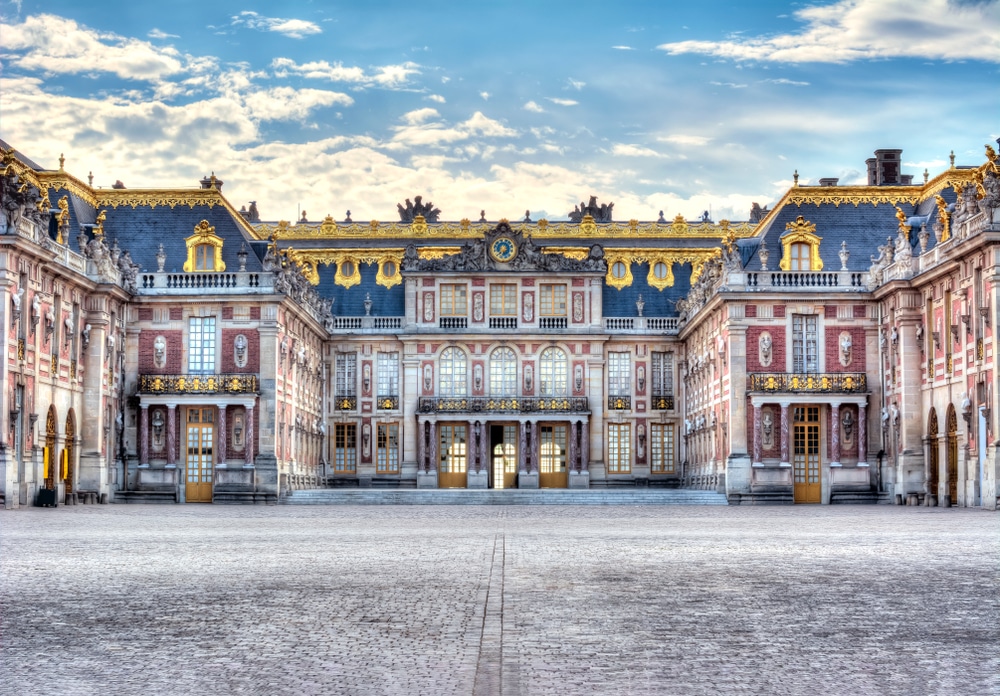 Source: Mistervlad / shutterstock
Source: Mistervlad / shutterstockYou’ll need a day to do justice to the feted royal complex some 20 kilometres south-west of the centre of the city.
From the 1660s, Louis XIV turned a royal hunting pavilion into a residence of such size and magnificence it became a byword for absolute power.
Louis XIV relocated the entire royal court here from the city, and the palace was embellished and expanded according to the tastes of subsequent kings and queens up to the end of Louis XVI’s reign.
Given the upheaval since the Revolution it’s even more remarkable that the palace and grounds, today a UNESCO World Heritage Site, have made it to the 21st century largely intact.
The palace alone has more than 2,300 rooms and covers more than six hectares.
One way to rein in the spiralling costs was to ensure that every detail and every material came from France, right down to the glass in the Hall of Mirrors.
These were produced by artisans smuggled in from Venice.
Give yourself as long as you can to explore the grounds and their fountains, canals and alleys, designed by André Le Nôtre (1613-1700), who set the template for the French formal style.
Website: http://chateauversailles.fr/
6. Sainte-Chapelle
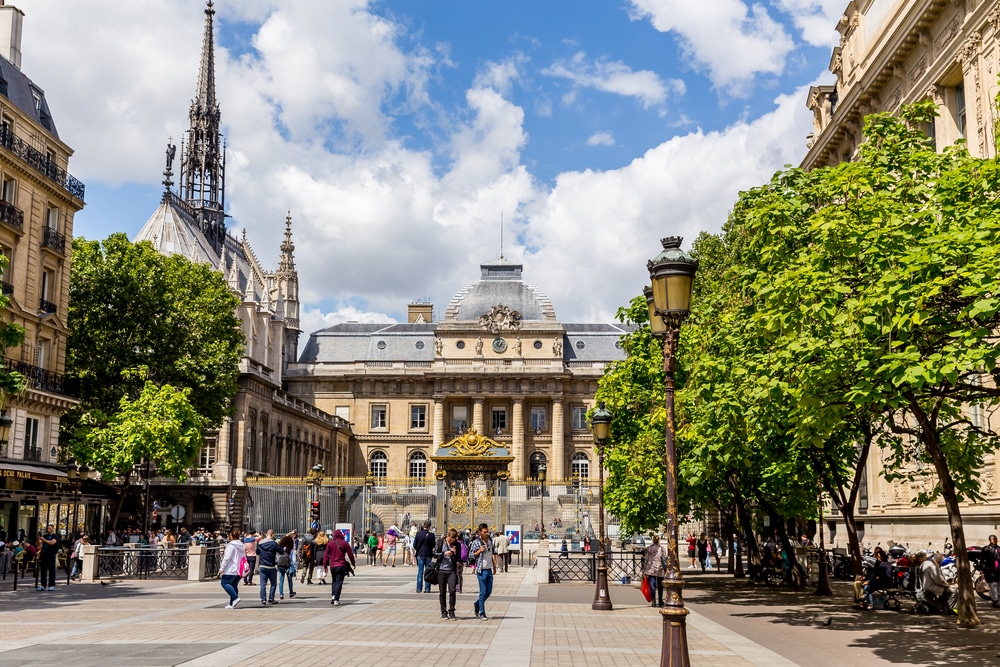 Source: maziarz / shutterstock
Source: maziarz / shutterstockOn Île de la Cité and as essential as the Notre-Dame de Paris is this Gothic chapel built to house Louis IX’s collection of holy relics.
The Sainte-Chapelle was ready in 1248, little more than six years after work began, an incredible achievement in its own right.
Louis IX was the only French monarch to be canonised, and between 1239 and 1241 he acquired what he believed to be fragments of the true cross and Christ’s crown of thorns.
Sainte-Chapelle’s outstanding feature is the stained glass that fills the nave and apse, to the extent that there’s much more glass than wall.
Each rising to 15 metres, these 15 windows have been here since the 13th century and show 1,113 scenes from the Old and New Testaments.
They provide a potted history of the world, from Genesis to the arrival of those relics in Paris.
Website: http://www.sainte-chapelle.fr/
7. Centre Pompidou
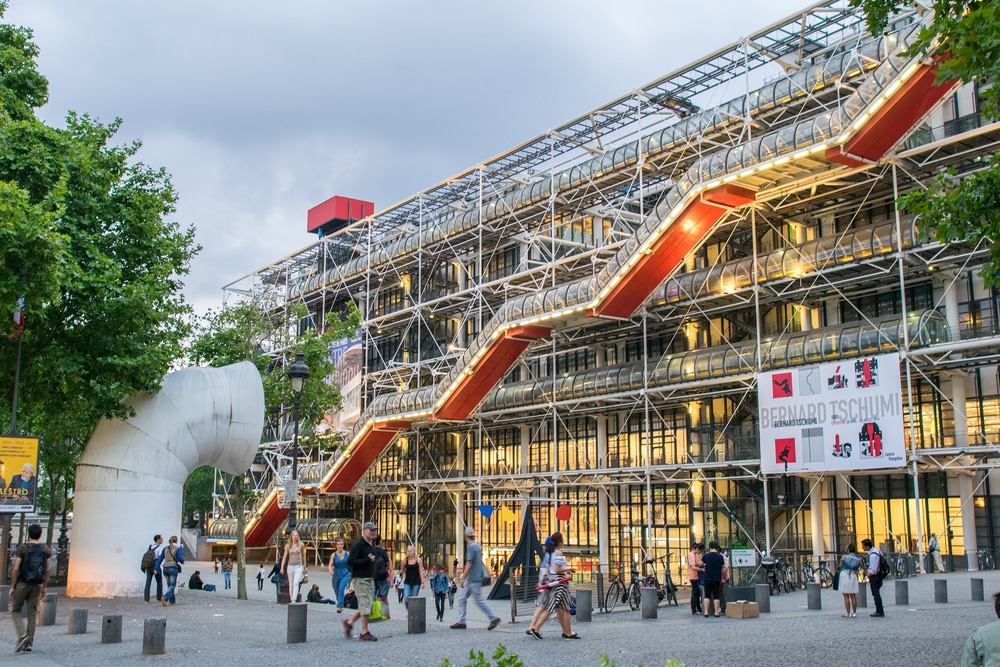 Source: pisaphotography / shutterstock
Source: pisaphotography / shutterstockStill a shock to the system, the High-Tech home of the Musée National d’Art Moderne clashes in a wonderful way with the cityscape on the edge of the Marais.
The Centre Pompidou (1977) was designed by an Italo-British team led by Renzo Piano and Richard Rogers, whose vision saw the functional elements like support structure, plumbing, climate control, sprinkler supply, electricity and even elevators all switched to the exterior in colour-coded pipes.
Go in for one of the world’s top modern and contemporary art museums, with formidable collections for every movement starting with Fauvism and continuing through Expressionist, Cubism, Abstract Art, Surrealism, Pop Art Conceptual Art and Nouveau Réalisme.
For just the briefest summary of the artists represented you’ve got Frida Kahlo, Matisse, Pablo Picasso, Piet Mondrian, Alexander Calder, Jackson Pollock, Andy Warhol and Joseph Beuys.
Website: https://www.centrepompidou.fr/
8. Montmartre
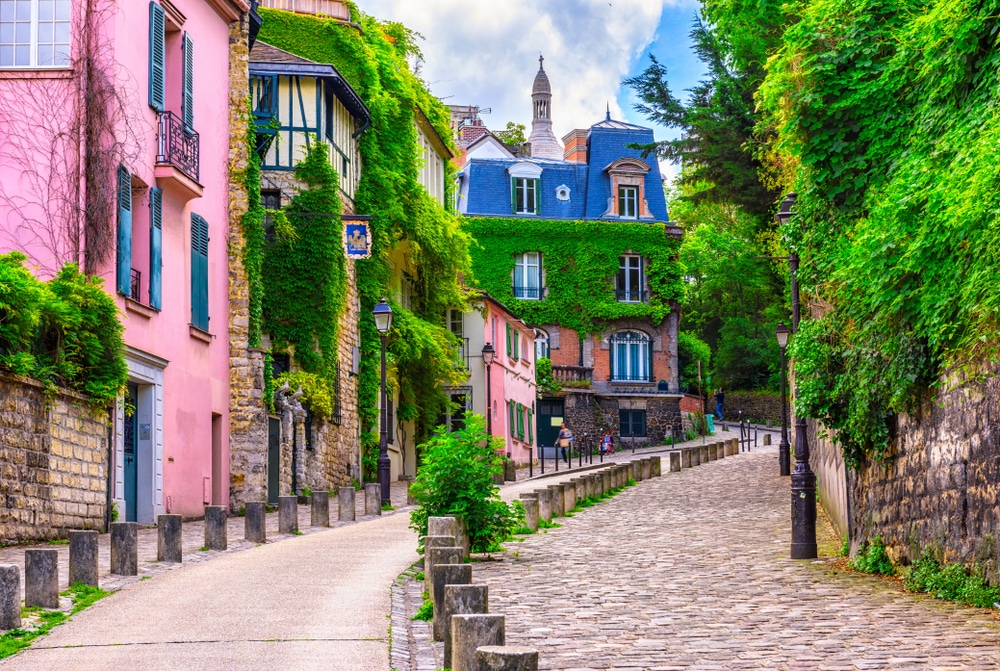 Source: Catarina Belova / shutterstock
Source: Catarina Belova / shutterstockUntil 1860 this lovable hillside neighbourhood was outside the city limits, which has helped it keep a village-like ambience on its twisting cobblestone streets and stairways.
There are little holdovers from when Montmartre was a rural idyll, in the windmills, Moulin Radet and the iconic Moulin de la Galette, and an entire vineyard draped on the hill’s north side.
Cresting the hill of course is the Sacré-Cœur, which we’ll talk about later.
For hundreds of years the hilltop was a handy firing position for invading armies, and became the scene for heavy fighting during the short-lived Paris Commune of 1871. Street artists spring to mind when you think of Montmartre, especially on Place du Tertre.
These portraitists are part of a tradition harking back to the Belle Époque when the likes of Renoir, Raoul Dufy, Picasso and Modigliani spent time working in this part of the city.
9. The Marais
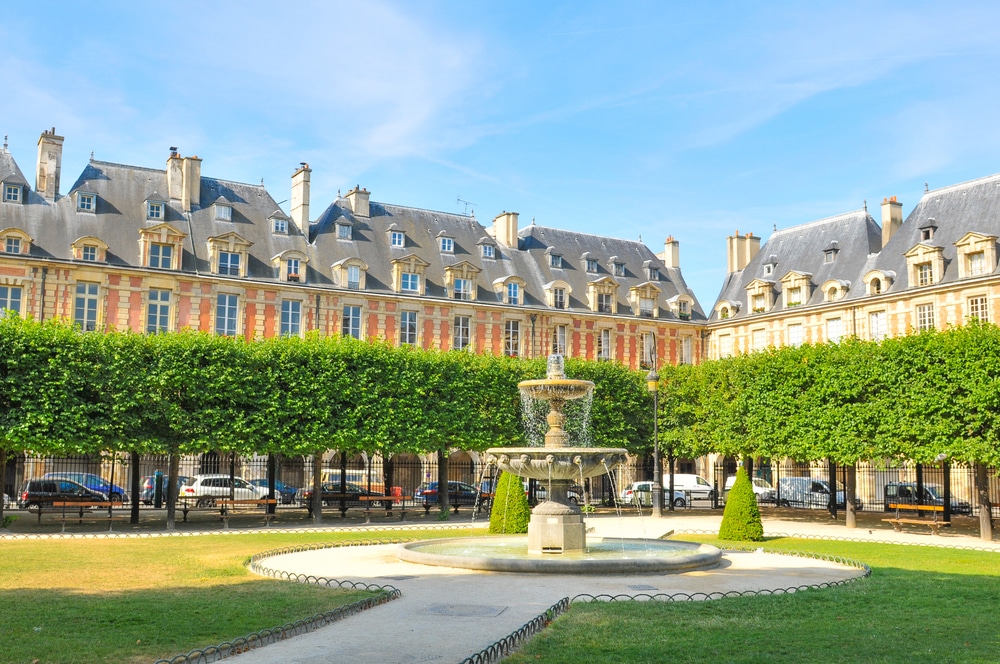 Source: Lucian Milasan / shutterstock
Source: Lucian Milasan / shutterstockBursting with hôtels particuliers built by the aristocracy in the 17th and 18th centuries, the Marais is a hint of Paris before the days of its grand boulevards.
This is a district of cobblestone streets and convivial little squares, with trendy boutiques, restaurants and art galleries.
But it’s also commanded by major landmarks like the Hôtel de Ville and the Pompidou Centre.
Fans of historic architecture could set off to discover as many 17th-century mansions as possible.
And no sightseeing tour would be complete without a stop at the Place des Vosges.
Laid out in 1605, this is the oldest planned square in Paris and helped attract the Parisian nobility to the district in the first place.
Among the many eminent figures to have lived in the Louis XIII townhouses facing the square are Victor Hugo, Cardinal Richelieu and the 17th-century literary icon Madame de Sévigné, who was born at No. 1 in 1626.
10. Notre-Dame de Paris
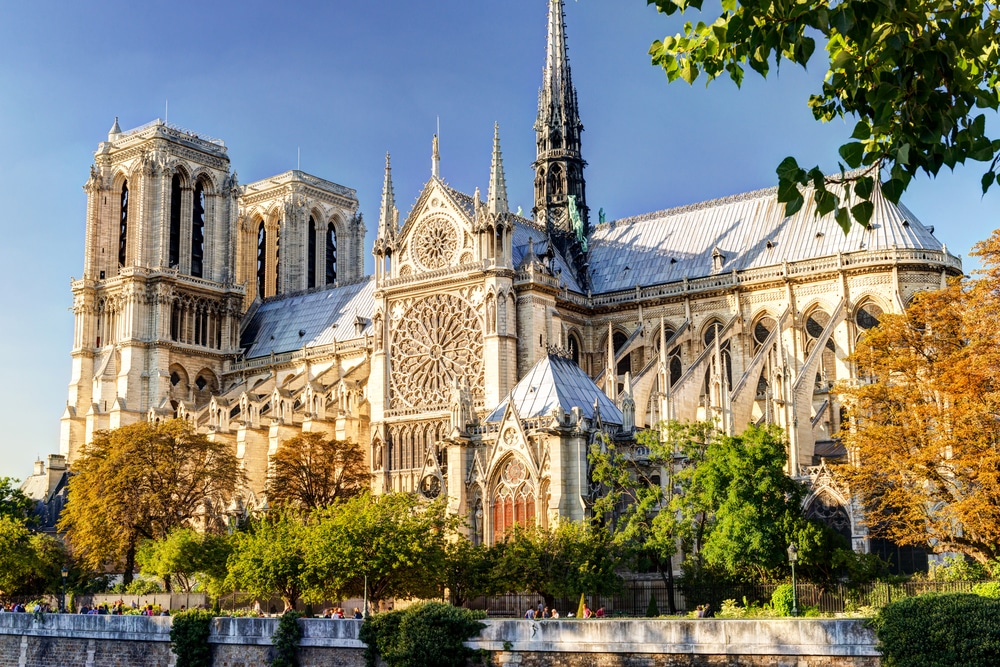 Source: Viacheslav Lopatin / shutterstock
Source: Viacheslav Lopatin / shutterstockWhen you read this there’s a good chance that this world-famous emblem of Paris and France will still be closed for repairs.
The cathedral of the Archdiocese of Paris is surely the world’s most recognisable Gothic building, refined over the 13th, 14th and 15th centuries.
Notre-Dame was renovated in the mid-19th century by the master restorer Viollet-le-Duc after the monument had caught the world’s imagination in Hugo’s The Hunchback of Notre-Dame (1831). Among its many treasured hallmarks are the stunning towers and portals on the west facade, loaded with iconography, as well as its marvellous stained glass, especially in the three 13th-century rose windows.
In April 2019, a fire caused by a short-circuit severely destroyed the 13th-century oak beams in the roof of the nave.
This completely toppled the spire dating to Viollet-le-Duc’s restoration, in turn damaging some of the internal rib vaulting below.
Within days, more than a €1 billion was raised for repairs, but painstaking work was needed to secure the stability of the building before the restoration could begin.
Website: https://www.notredamedeparis.fr/
11. Musée Rodin
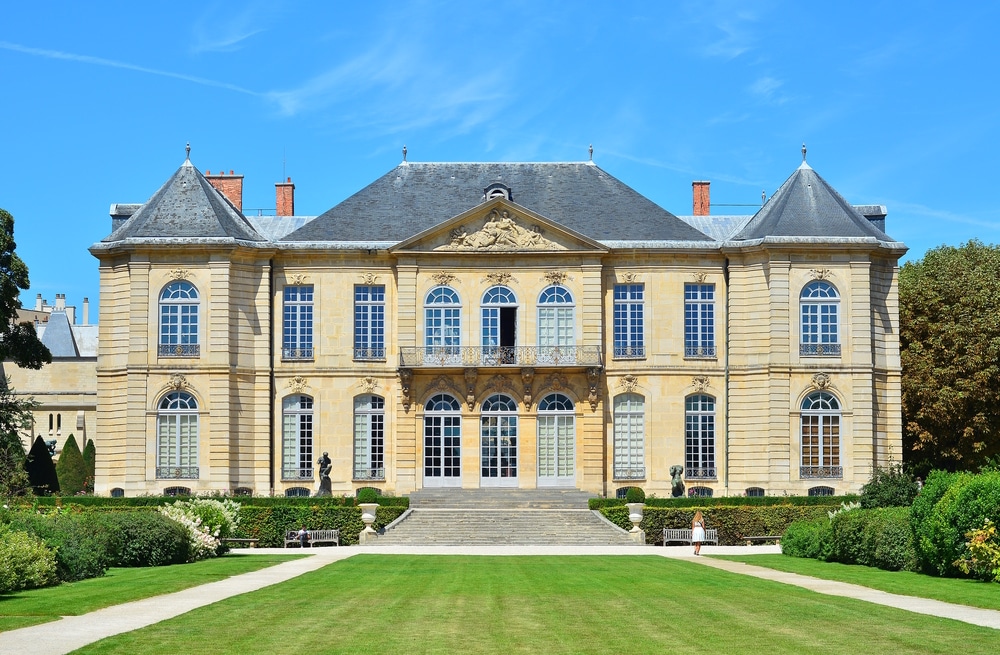 Source: liberowolf / shutterstock
Source: liberowolf / shutterstockWithin metres of Les Invalides is the main location for a museum dedicated to the founder of modern sculpture, Auguste Rodin (1840-1917). The venue is the Hôtel Biron (1732), which was used as a workshop by Rodin from 1908. Later the artist reached an agreement with the French state that he would donate his entire collection on the condition that this Louis XV-style mansion be turned into a museum.
So you’ll get to delight in room after room graced by masterpieces like The Thinker, The Gates of Hell, Meditation or The Inner Voice and The Kiss, complemented by beautiful 18th-century wood-panelling.
The collection runs to thousands of sculptures, drawings, photographs and objets d’art, including the sublime work of Camille Claudel and paintings by van Gogh, Renoir and Monet.
Website: http://www.musee-rodin.fr/
12. Musée de l’Orangerie
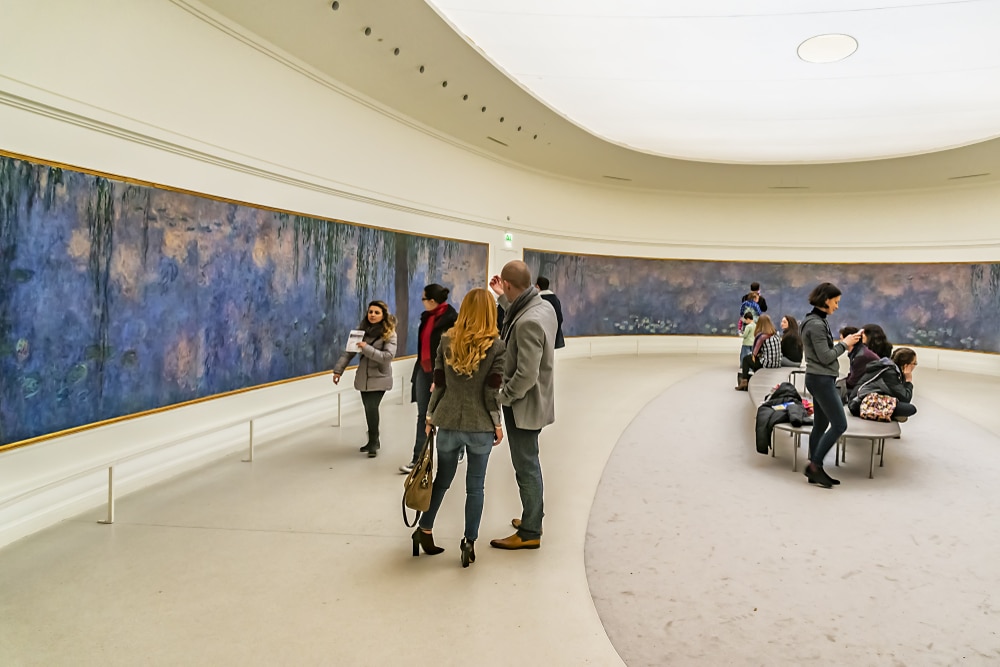 Source: Kiev.Victor / shutterstock
Source: Kiev.Victor / shutterstockClaude Monet’s eight Water Lily murals are the headline at this sensational art museum in Napoleon III’s orangery in the corner of the Jardin des Tuileries.
Bordered on two sides by the Seine and Place de la Concorde, this long narrow building descends into the ground, and despite lots of modern adjustments has held onto the Ionic porticos at each end, from 1852. There has been an art museum inside since just after the First World War, when two oval rooms were created to showcase Monet’s masterpieces.
Further down you can lose yourself in the rich Jean Walter and Paul Guillaume collections, acquired in 1959 and 1963, and brimming with paintings by Cézanne, Renoir, Matisse, Picasso, Modigliani, Rousseau and Derain, to name a handful.
Website: https://www.musee-orangerie.fr/
13. Les Invalides
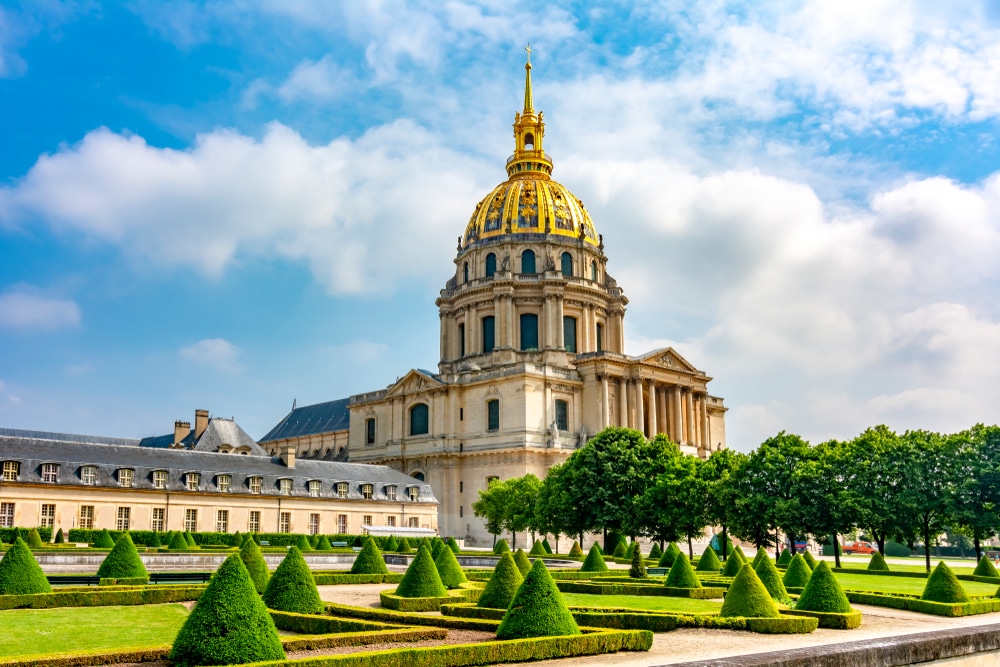 Source: Mistervlad / shutterstock
Source: Mistervlad / shutterstockThis awe-inspiring complex on the left bank was built at the behest of Louis XIV in the 1670s as a hospital and retirement home for military veterans, a role it continues to fill.
The Hôtel des Invalides can be spotted all over Paris for the Dôme des Invalides, the tallest church in Paris at 107 metres with a dome that glows with more than 12 kilos of gold leaf.
Right beneath that dome is the resting place of Napoleon Bonaparte, in a tomb carved from red quartzite on a base of green granite.
The complex’s web of buildings house a variety of institutions, all with some connection to the military and foreign affairs.
For visitors the foremost of these is the Musée de l’Armée, a staggering depository for military artefacts from antiquity to the present, with compelling royal pieces like Henry II’s burgonet (1550s) and the 16th-century sword of François I.
Website: https://www.musee-armee.fr/
14. Place de la Concorde
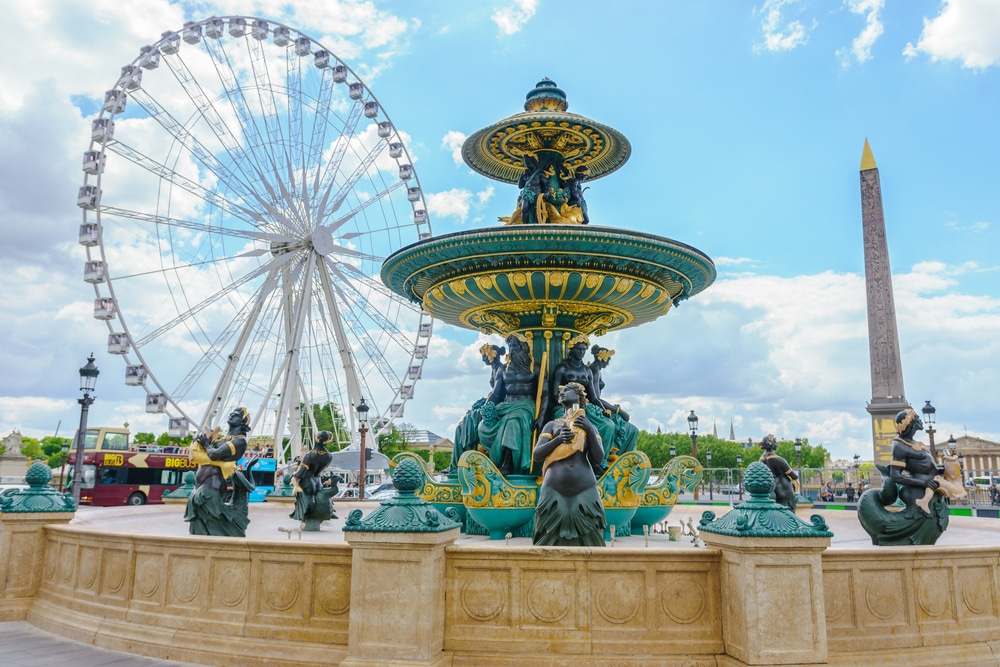 Source: icestylecg / shutterstock
Source: icestylecg / shutterstockResonating with history, the largest square in the capital is at the conclusion of the Champs-Élysées.
At the centre is the 3,300-year-old Luxor Obelisk, once guarding the entrance to the Luxor Temple and gifted to France in the 19th century.
From this monument there’s a satisfying line of sight to the Arc de Triomphe and the Grand Arche de la Défense beyond.
Place de la Concorde will always be synonymous with the French Revolution, as the place where, in 1793 Louis XVI was executed, followed by Marie Antoinette, Élisabeth of France and Madame du Barry.
They were joined by some of the men who brought about the Revolution in the first place, like Robespierre, Desmoulins and Georges Danton.
The imposing mansions on the north side, separated by rue Royale are the Neoclassical Hôtel de Crillon (1758), now a famous luxury hotel and the Naval Ministry.
At each corner are two statues from the mid-19th century, representing the cities of Brest and Rouen, Lyon and Marseille, Bordeaux and Nantes and Lille and Strasbourg.
15. Latin Quarter
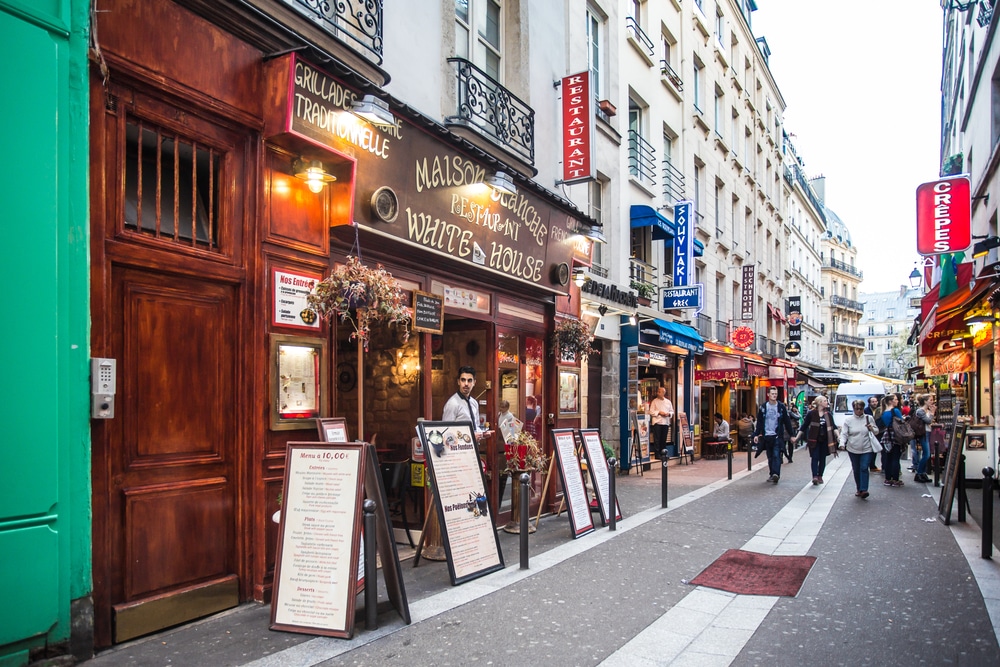 Source: littlenySTOCK / shutterstock
Source: littlenySTOCK / shutterstockLong a place of higher education and all the youthful energy and fun that go with it, the Latin Quarter is on the left bank in the 5th and 6th arrondissements.
At the historic heart of the Sorbonne (old University of Paris), this area has its beginnings in the 12th century when scholars broke away from the control of the church and moved across the river.
The term “Latin Quarter” has been around since the 17th century because of the widespread use of Latin in teaching at the time.
The list of institutions of higher learning based here is enormous, including several schools based in the historic buildings of the Sorbonne, founded in 1253. On a tangle of alleyways it’s a laid-back and stylish part of the city, with no lack of cafes and restaurants and ample entertainment at prominent venues like Théâtre de l’Odéon and the Paradis Latin.
For sightseeing you’ve got the Jardin du Luxembourg and the Pantheon, solemn burial place of notables like Victor Hugo, Rousseau, Voltaire, Zola and Pierre and Marie Curie.
16. Père-Lachaise Cemetery
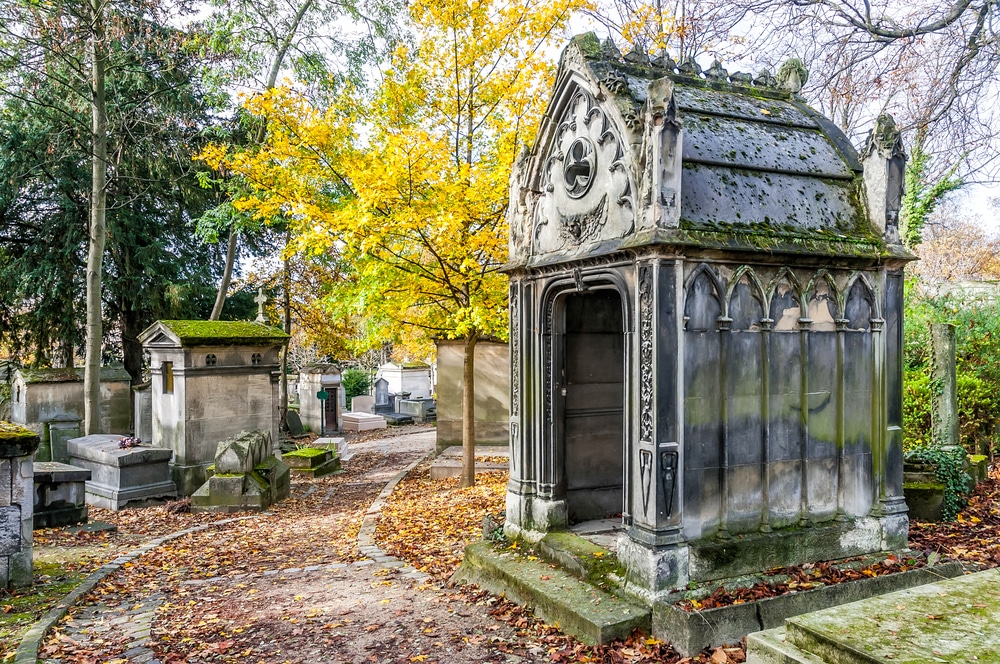 Source: Maxal Tamor / shutterstock
Source: Maxal Tamor / shutterstockParis was desperate for burial space at the turn of the 19th century and the answer was to lay out a series of municipal cemeteries beyond the city precincts.
Opened in 1804, the very first of these was Père-Lachaise Cemetery in the east, now the 20th arrondissement.
Over 44 hectares and still functioning, this is the most visited necropolis in the world and has taken more than a million interments in its 200+ years.
Some of the most prestigious are Proust, Chopin, Balzac, Edith Piaf, Delacroix, Molière, Sarah Bernhardt and Oscar Wilde.
Even that list doesn’t do justice to the cemetery’s roll-call, counting 75 painters, 40 composers, and figures like the man who proposed the guillotine the official method of capital punishment (Guillotin), and the man who overhauled the Paris streetscape (Baron Haussmann). Respectfully, you could compare Père-Lachaise to an open-air museum for its many monuments, miniature chapels and mausoleums.
These are in a spectrum of styles, from Empire to neo-Gothic, Beaux-Arts, Neoclassical and Baroque, all laid out in leafy English-style parkland.
Website: https://pere-lachaise.com/
17. Palais Garnier
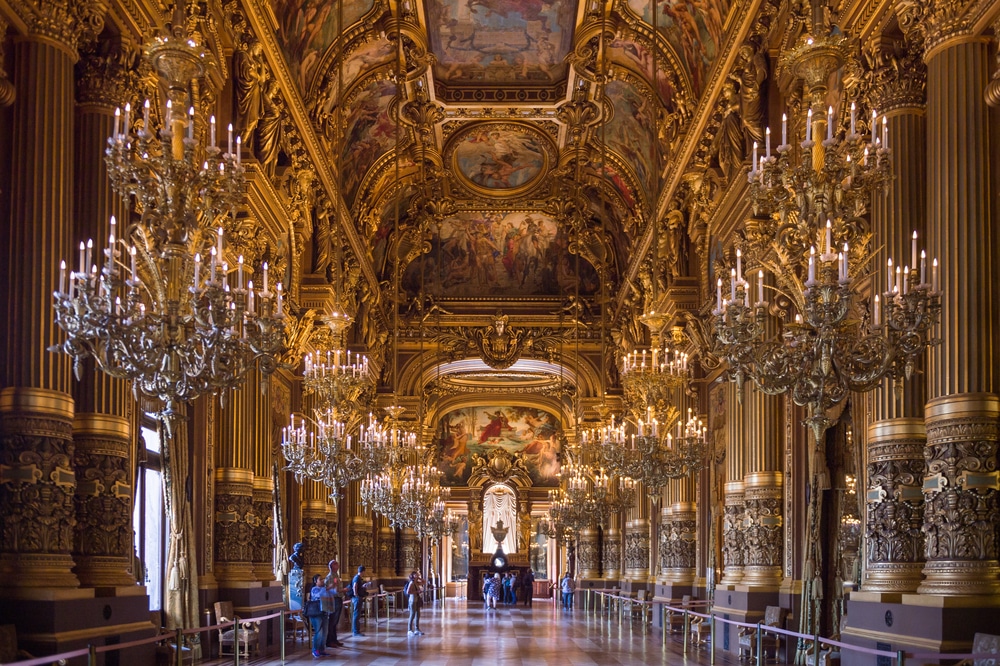 Source: Anton_Ivanov / shutterstock
Source: Anton_Ivanov / shutterstockA symbol for Paris to match any on this list, the Palais Garnier (1875) could be the one true masterpiece of the Second Empire style.
Napoleon III ordered its construction, which took almost 15 years and was interrupted by the Franco-Prussian War.
And if this 1,979-seat opera house was notoriously expensive, at least it shows, in the facade’s profuse Greek mythical statuary, the multicoloured marble friezes and fluted columns.
In line with the extravagance of the Second Empire style, there’s barely a centimetre without decoration, and 17 different materials went into the facade.
The opulence is heightened inside, at the Grand Foyer and Grand Staircase and their ample gold leaf, velvet and marble that varies from white to red and green.
We haven’t even mentioned the auditorium and its humongous stage, so large it can fit 450 performers.
Look up and you’ll see Marc Chagall’s ceiling, painted in 1964, evoking scenes from operas by 14 composers.
With the arrival of the modern Opéra Bastille in 1989, the Palais Garnier is now mainly used for ballet.
And if you just want to gaze in awe at the finery you can take a self-guided tour around the public spaces, or book a guided tour for a bit more depth.
Website: https://www.operadeparis.fr/
18. Sacré-Cœur
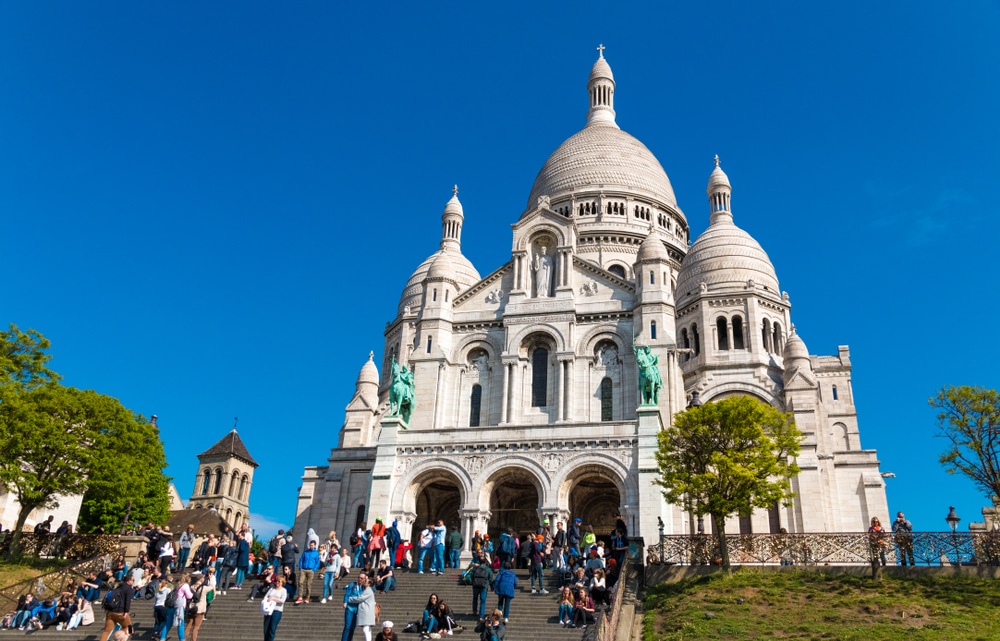 Source: H-AB Photography / shutterstock
Source: H-AB Photography / shutterstockThe great neo-Byzantine basilica capping the butte Montmartre is built from pristine white travertine and has been a north-eastern landmark for the city since 1919. Work had started more than 40 years before, and the church was conceived as an expression of national penance both for the humiliation of the Franco-Prussian War and the Paris Commune of 1871 after the collapse of the Second Empire.
You can take the easy way to the hilltop via the funicular or work your way up the meandering paths on Square Louise Michel.
The first thing to mention is the all-encompassing view of Paris from the court in front, which gets even better if you go up to the top of the dome.
Inside, the must-see is the mosaic of Christ in Majesty (Christ Pantocrator) in the apse.
Designed by Luc-Olivier Merson (1846-1920), this is the largest mosaic in France and one of the largest in the world.
Website: http://www.sacre-coeur-montmartre.com/
19. Jardin du Luxembourg
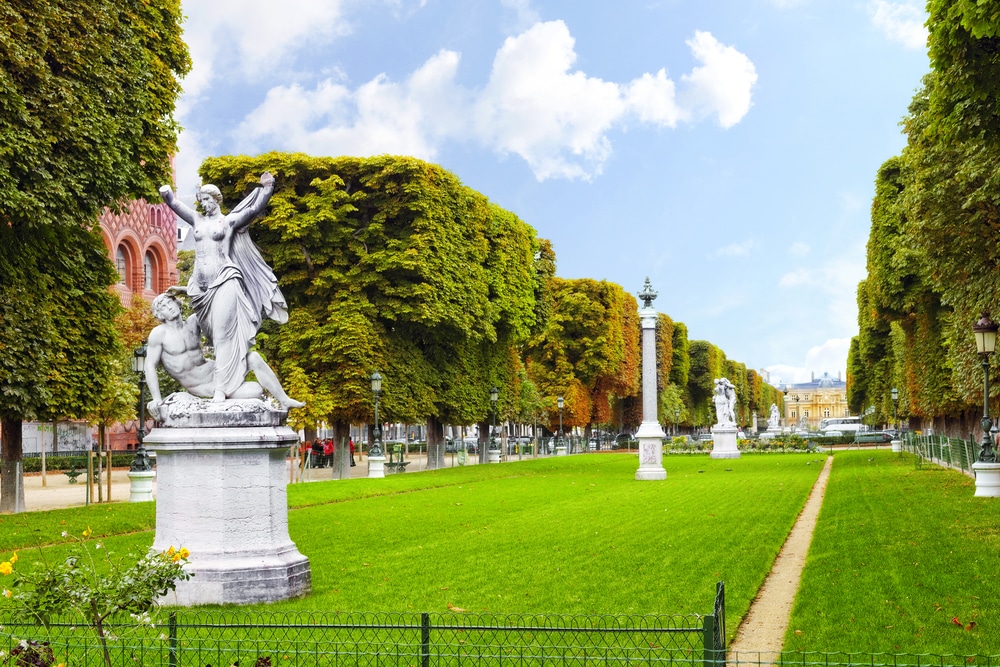 Source: V_E / shutterstock
Source: V_E / shutterstockPerhaps the prettiest park in Paris has a history going back the first half of the 17th century when Marie de’ Medici erected a palace for herself after the death of Henry IV.
That building, though much changed, is today the meeting place for the French Senate, while the tranquil garden is divided into formal French parterre in the east and a looser English-style landscape in the west.
They both converge on a central octagonal basin skirted by balustraded terraces decorated with statues of French Queens, as well as saints and copies of classical sculpture.
In all there are more than 100 works of sculpture, fountains and monuments littering the park.
To the south-west is an orchard with historic apple and pear varieties, accompanied by a puppet theatre and the park also has a fenced playground and a vintage carousel for children.
On the north-east side meanwhile you’ll see a fragment of the original 17th-century garden at the Medici Fountain, carved in 1630.
20. Les Passages Couverts
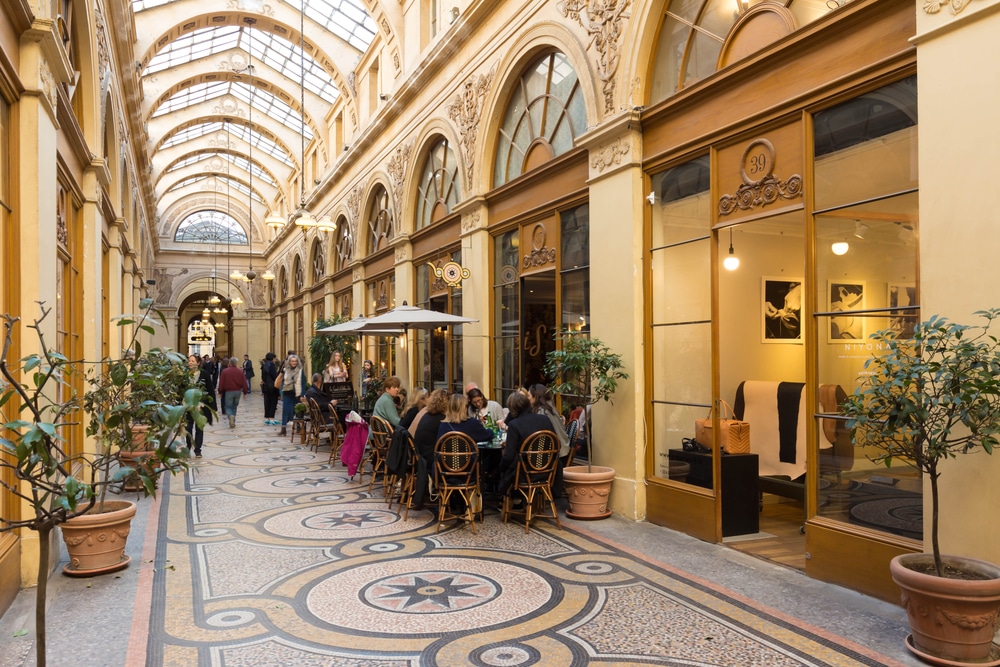 Source: Petr Kovalenkov / shutterstock
Source: Petr Kovalenkov / shutterstockSomething else that distinguishes the Parisian cityscape, especially on the right bank, is its covered shopping arcades.
These sprouted in the first half of the 19th century as private enterprises, cutting under existing buildings and keeping their affluent clientele out of the elements.
As a rule they are exquisitely decorated and lit from above by metal and glass roofs.
There were as many as 150 of these passages by the 1850s, but a lot were lost during Baron Haussmann’s renovation of the city shortly after.
Today around 25 survive and are open to the public, and there’s a high concentration in the 2nd and 9th arrondissements.
A couple of required visits are the Passage des Panoramas (1800), where the Théâtre des Variétés dates to 1807 and continues to put on shows.
While a short walk away is the Neoclassical Galerie Vivienne (1823), 176 metres long and enriched with an elegant glass roof, floor mosaics, sculptures and reliefs celebrating trade.
21. Montparnasse Tower View
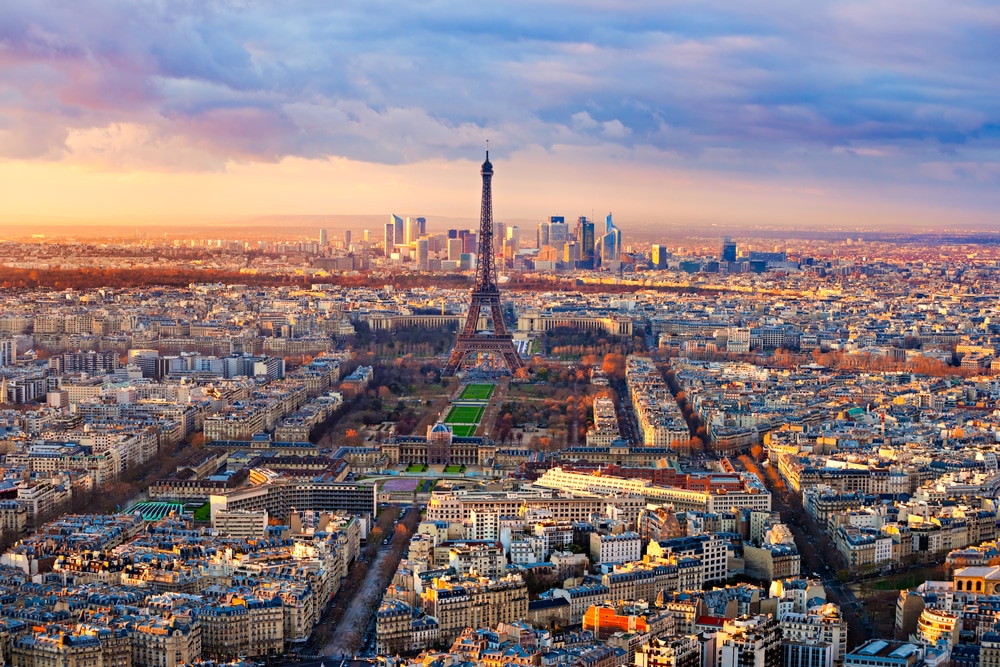 Source: Luciano Mortula - LGM / shutterstock
Source: Luciano Mortula - LGM / shutterstockFair to say that there isn’t a lot of love for this monolithic tower protruding from the Montparnasse area in the south-western 15th arrondissement.
The Tour Montparnasse was unveiled in 1973 and at 210 metres was the tallest modern skyscraper in the country until 2011. But what the tower does have in its favour is the most comprehensive panorama of Paris, even better than the Eiffel Tower and Montmartre because it includes both of those landmarks, and doesn’t include Tour Montparnasse.
A high-speed lift shoots you to the observation deck in 38 seconds flat and you can stay out of the elements or go up to the roof terrace where the entirety of the City of Light spreads out in front of you.
There’s free Wi-Fi up here, as well as a bar for a glass of champagne, and virtual reality kiosks going into depth on the most famous monuments of Paris.
Website: https://www.tourmontparnasse56.com/
22. Jardin des Tuileries
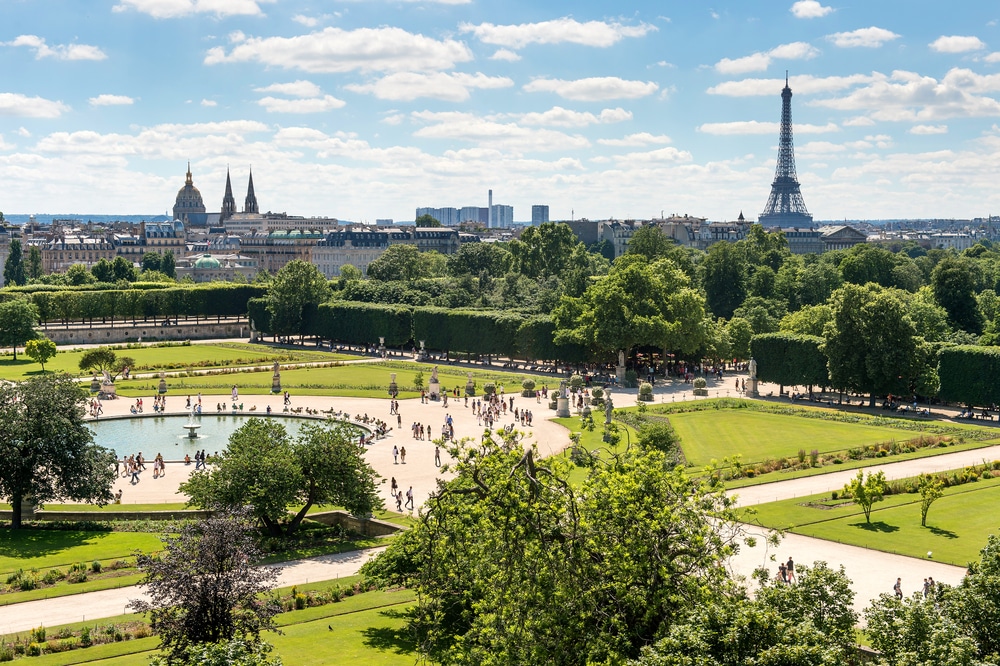 Source: Lena Ivanova / shutterstock
Source: Lena Ivanova / shutterstockUntil it was burnt down by the Paris Commune in 1871, the Tuileries Palace stood west of the Louvre, on what is now the Place du Carrousel.
The palace was ordered by Catherine de’ Medici and was the Parisian residence for the majority of French monarchs, from Henry VI in the 1570s through to Napoleon III.
To the west, Catherine de’ Medici’s Italian gardens were reworked in the French formal style by André Le Nôtre, who also raised the two terraces that run the length of the garden and created the impressive avenue through the centre.
That layout has persisted, with the famous circular and octagonal ponds of the central avenue, and a symmetrical grid of alleys embellished with topiary, square lawns, neatly clipped trees and more than 200 statues and vases, dating from the 17th to the 21st century.
From June to August the Fête des Tuileries brings fairground rides and amusements, not to mention the scent of candyfloss and waffles.
23. Petit Palais
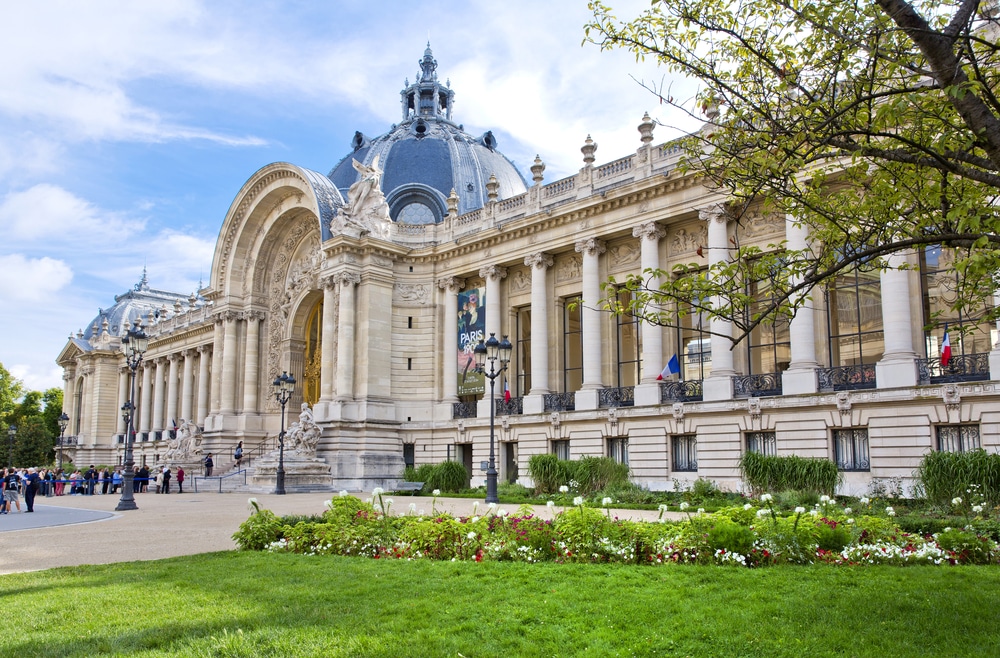 Source: lapas77 / shutterstock
Source: lapas77 / shutterstockWest of Place de la Concorde by the Seine there’s so much splendour it can be hard to know where to look.
Crossing the river is the Seine’s most ornate bridge, Pont Alexandre III, and beside it on the right bank are the Grand Palais and Petit Palais.
All three were built to be ready for the Universal Exposition of 1900 and designed in a theatrical Beaux-Arts style.
To the left, the Grand Palais with its soaring glass vault is a venue for high-profile exhibitions and houses the Palais de la Découverte science museum.
On the right, the Petit Palais contains the City of Paris Museum of Fine Arts.
The collection is first-class and wide-ranging.
Although it mostly spans 1880-1914 and French artists like Rodin, Monet, Pissarro, Sisley and Modigliani, there are also works by Poussin, Fragonard, Rembrandt, Rubens, Delacroix, Courbet, Ingres and Géricault.
Website: https://www.petitpalais.paris.fr/
24. Galeries Lafayette
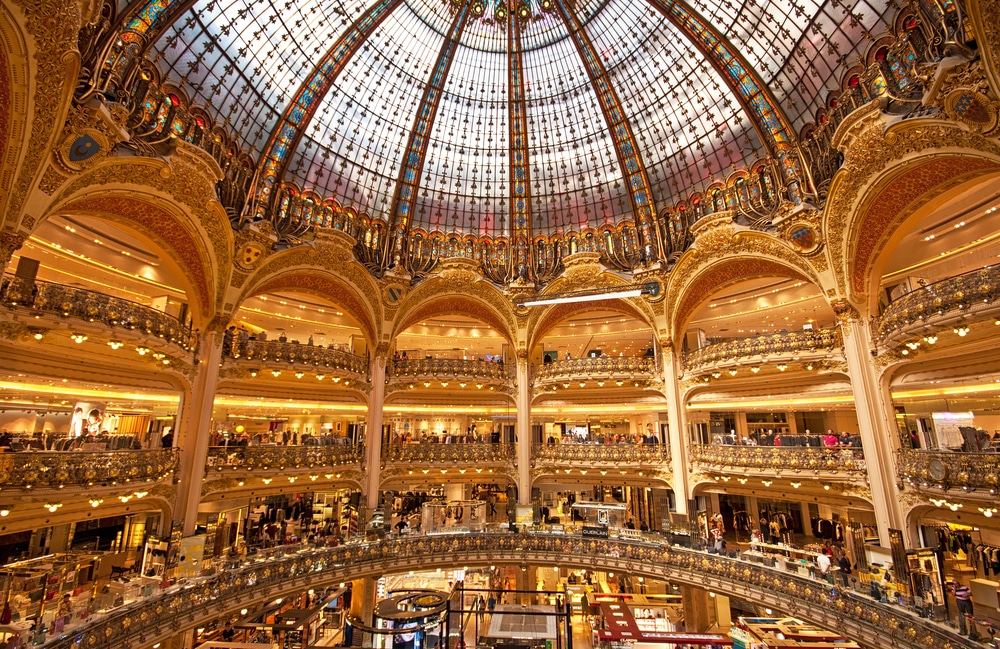 Source: Botond Horvath / shutterstock
Source: Botond Horvath / shutterstockAs much a sightseeing staple as a shopping destination, the flagship for a now global luxury department store chain moved into its palatial home on the stately Boulevard Haussmann in 1912. The founder Théophile Bader recruited architect Georges Chedanne to design his store in a glamorous Art Nouveau style.
The crowning centrepiece is a shimmering glass and steel dome by Chedanne’s pupil Ferdinand Chanut.
There’s a glass platform just below the dome, letting you take in the ornate metalwork, and survey the various departments below.
Once you’ve come to your senses head to the rooftop terrace on the 7th floor for one of most cherished views of Paris, with the Palais Garnier in the foreground to the south.
Website: https://haussmann.galerieslafayette.com/
25. Marché d’Aligre
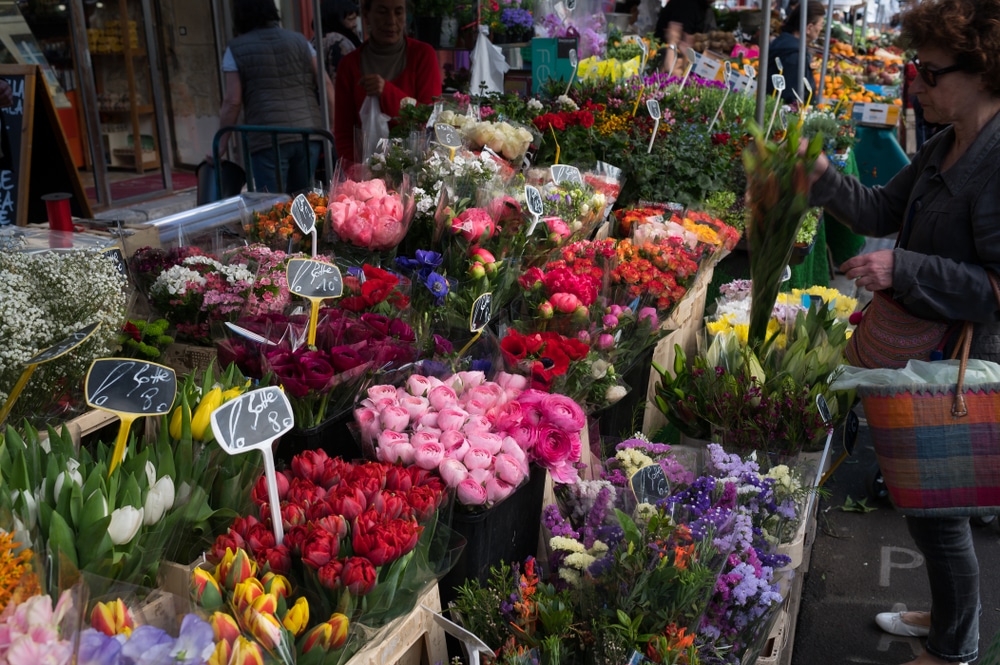 Source: timsimages.uk / shutterstock
Source: timsimages.uk / shutterstockParis has no shortage of world-class markets, whether you’re out for seasonal produce, epicurean treats, second-hand books or trinkets.
A market that combines all of these also happens to be one of the city’s oldest.
Marché d’Aligre in the 12th arrondissement, between the faubourg St Antoine and the rue de Charenton grew up in the 18th century when it helped feed a hardy, working-class population of cabinetmakers.
This suburb behind the Bastille was at the core of popular uprisings that helped bring down regimes, and the market is a blast of the real Paris.
Trading every morning apart from Mondays, there’s an open-air section on the eastern end of Place d’Aligre, and the covered Marché Beauvau on the west side of the square and dating back to 1779. Inside you can shop for meat, charcuterie, wine, cheese, oils and spices, while stalls for seasonal produce and second-hand bargains line the street.